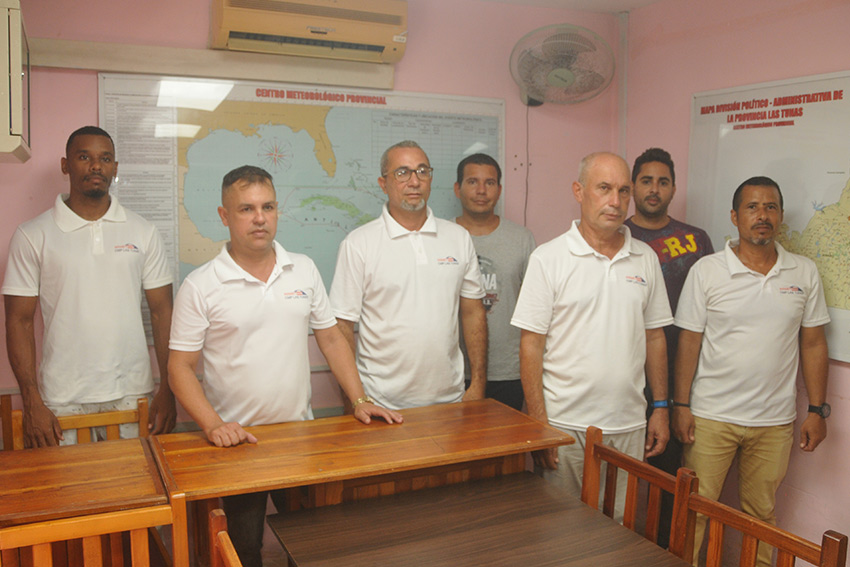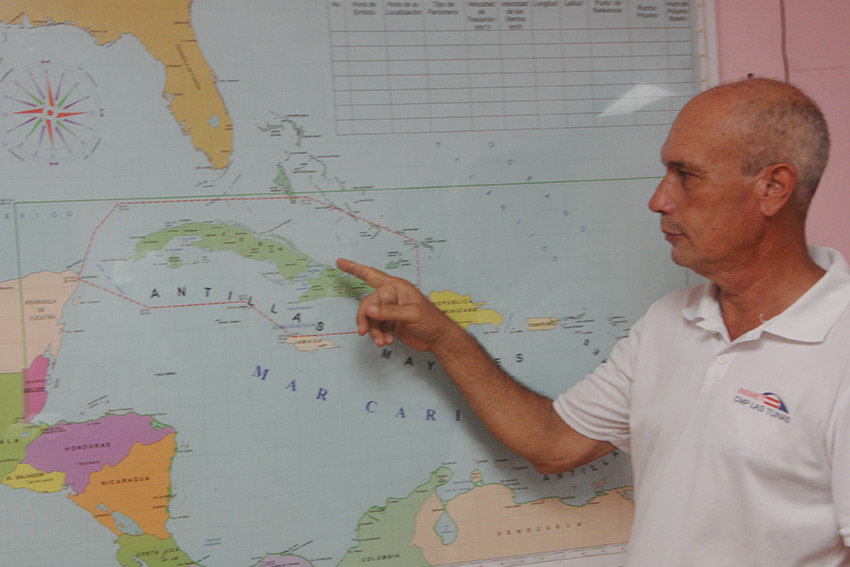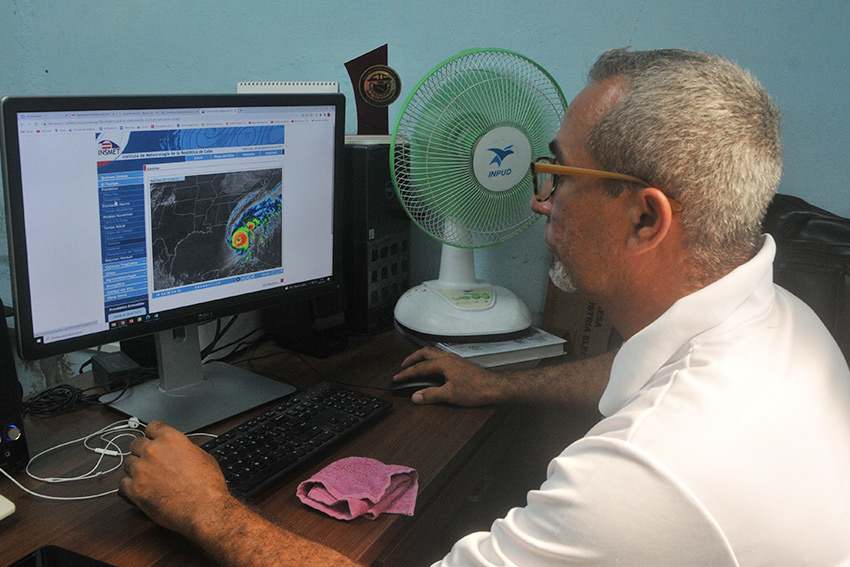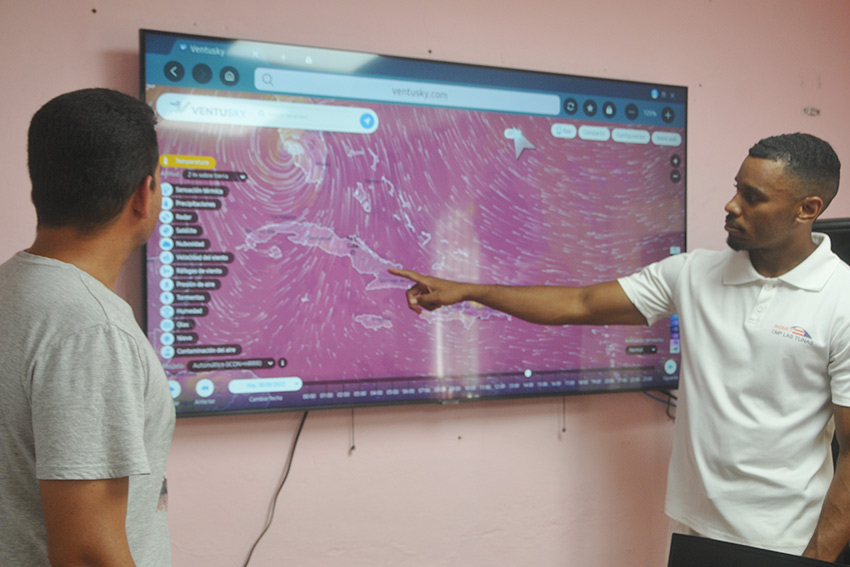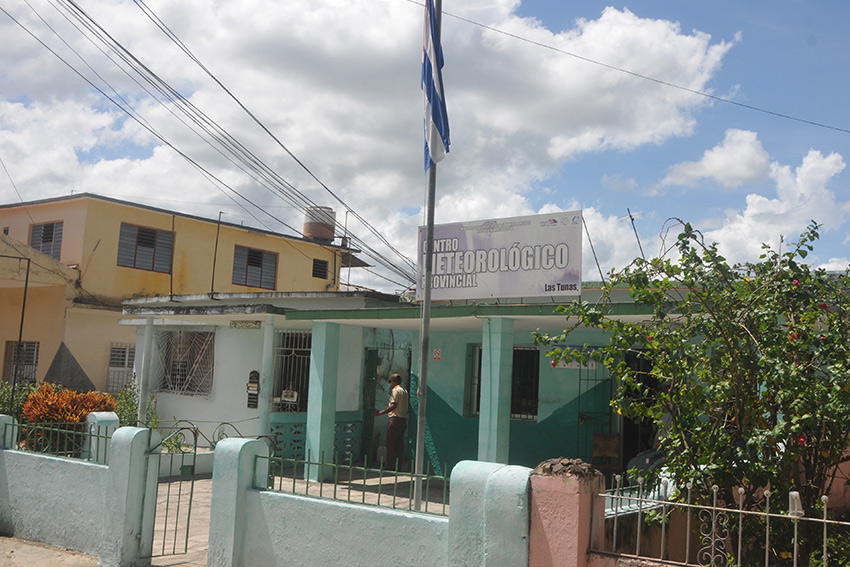
“We will have sun and some clouds in the morning. By the end of it, the cloudiness will increase, until it becomes cloudy in the afternoon, with the occurrence of some rains and thunderstorms. The day will be warm with maximum temperatures…”
Las Tunas, Cuba.- Those words reach the homes of Las Tunas every day. Three times a day they are heard through the waves of Radio Victoria station; maps and the faces of prominent local meteorologists can also be seen on local TV.
The forecast for the next 24 hours is published on the web, at the address www.metltu.cu, and the group of the Provincial Meteorology Center (CMP), at its headquarters at Lucas Ortiz number 62, also attends to some people who arrive and ask about dissimilar aspects.
Studying the variables and making the forecast is perhaps the best-known task carried out by the scientific institution, which has just celebrated its 30th anniversary on October 1st. But others are not as well known, although are very important for the development of the territory.
MSc. Alexey Moreno Borges, technical deputy director of the entity, pointed out that "Meteorology is a science that has a direct impact on the well-being of people and influences human, animal, and plant health, besides various economic activities.
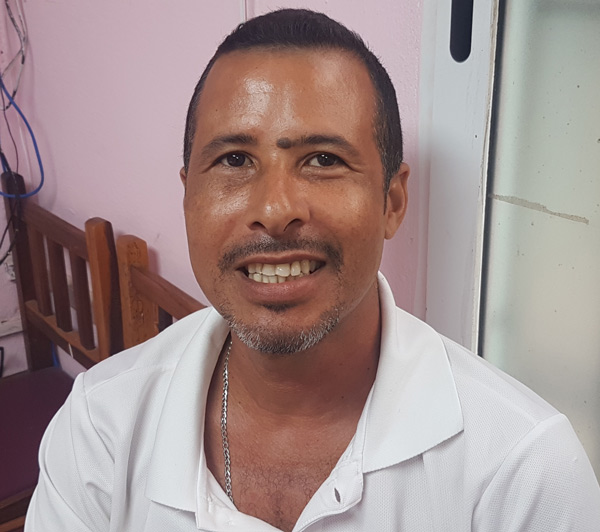 José Norland Peña Ojeda, the senior specialist of the Applied Meteorology group, knows this very well. He arrived at the Department of Forecasts at the age of 27 and ten years later he directed his steps to scientific research and climate prediction.
José Norland Peña Ojeda, the senior specialist of the Applied Meteorology group, knows this very well. He arrived at the Department of Forecasts at the age of 27 and ten years later he directed his steps to scientific research and climate prediction.
“I had the joy of learning with outstanding professionals who guided me through the specialty, and I learned a lot from all of them. Now I lead a team that is in charge of various branches of Meteorology, all in pursuit of local socioeconomic development.
“We provide services to different entities. For this reason, projects and research are carried out, and the climate, drought, and atmospheric pollution are monitored; we design maps and even study the quality of the air that circulates in the province, either through mobile emissions or fixed sources.
"We also work on Agrometeorology and produce information that pays tribute to food production, such as agricultural and livestock bulletins, which include different topics related to the appearance of pests and diseases in animals and plants."
Together, researchers and forecasters enjoy the recognition of the people and the authorities because, until the end of August, the center of Las Tunas exhibits 92.8 percent of efficiency in forecasts and, being the average in the country out of 87, the province is one of the three with the highest accuracy.
 Although she has been retired for seven years, Niurka Rodríguez Sales has a lot to do with that result. She no longer predicts and is not even seen frequently in the corridors of the institution, but everyone talks about her -for the good- and is grateful to be one of those who paved the way.
Although she has been retired for seven years, Niurka Rodríguez Sales has a lot to do with that result. She no longer predicts and is not even seen frequently in the corridors of the institution, but everyone talks about her -for the good- and is grateful to be one of those who paved the way.
“I started when I was very young and, when I retired, I had already been in the sector for 42 years. I belonged to the first graduation of meteorologists; my beginnings were as a meteorological observer. We were three girls; we lived in the Cucalambé secondary school, in a very humble office, with almost no equipment.
“Then, Commander in Chief Fidel Castro Ruz, who always had concerns about Meteorology, agreed with the World Meteorological Organization, and the Cuba-507 project was developed, sponsored by the now-defunct Union of Soviet Socialist Republics (USSR).
“Thus, we were able to forecast based on science. Weather stations were built throughout the country and we had one here on the outskirts of the city and another in Puerto Padre. They were very well equipped with what was necessary to make a good observation of the weather.”
When it was founded, the CMP was in the so-called Bonachea neighborhood, where today the offices of the National Social Security Institute are located, and we were very few colleagues. Over the years, others arrived who received practical knowledge from those who were already there and postgraduate courses in various branches of Meteorology.
So time went by and today the group of 53 workers has 33 university graduates, 11 Master of Science degrees, and one doctoral student. For them, there is no rest on weekends or days of celebration. The success of their predictions and timely communication depends on the success of the province in the face of the different weather phenomena.
